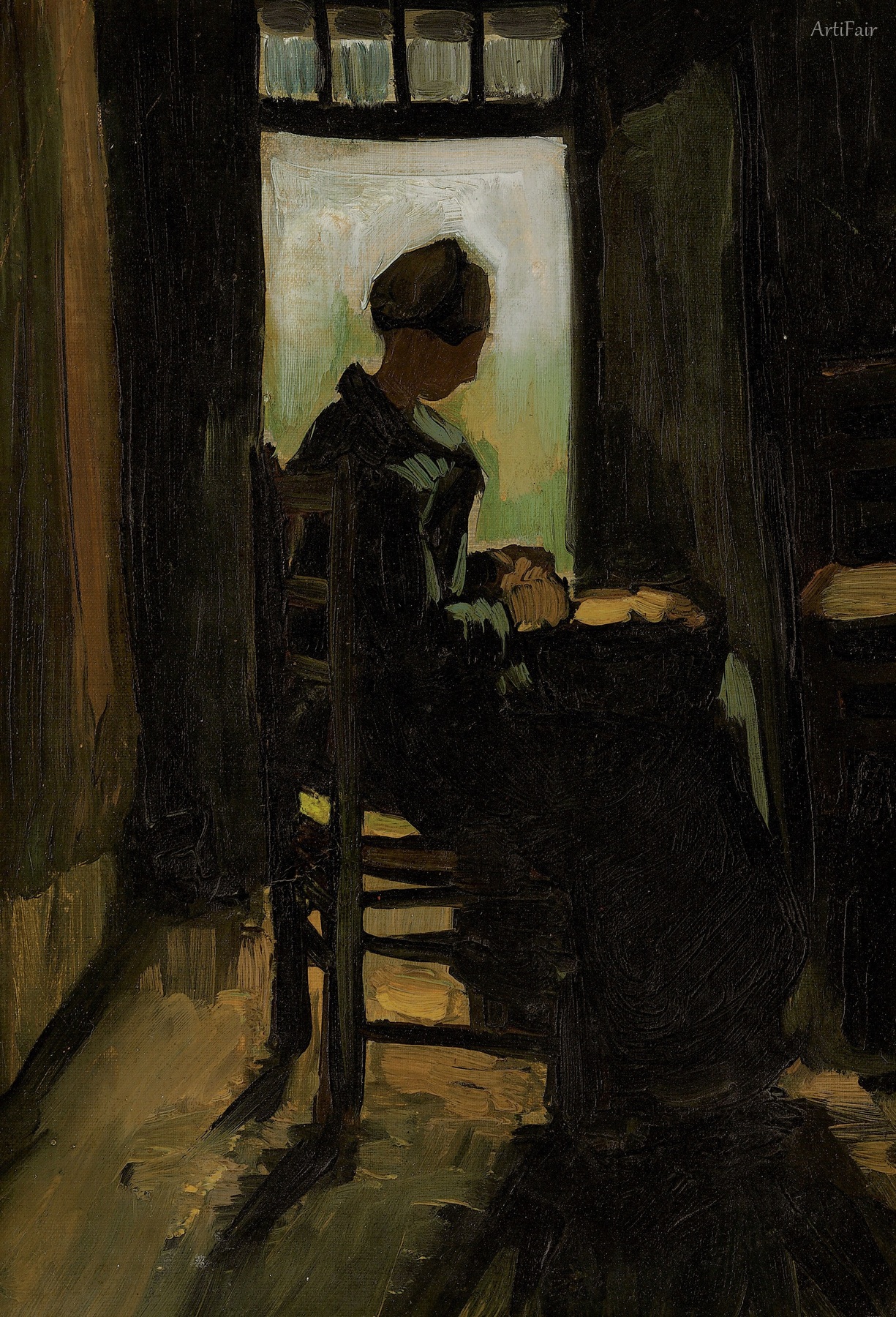
Art Appreciation
In this evocative piece, we are drawn into the intimate scene of a peasant woman, her figure cradled by the shadows of a dimly lit interior. The unmistakable silhouette—draped in muted tones of blue and black—sits before an open door, where diffused daylight seeps in, illuminating the background with a serene yet haunting glow. Her hands, engaged in the simple task of peeling potatoes, speak volumes of the toil and dedication embedded within her daily life. What strikes me as I gaze at this masterful work is how Van Gogh utilizes thick strokes and textured brushwork, creating a palpable richness that vibrates with each hue, merging the figure with the surrounding darkness, yet allowing the light to define her presence.
As I imagine the tranquility of the moment, I am wrapped up in the emotional weight that resonates through the composition. The contrast between light and shadow is not merely aesthetic; it echoes struggles and resilience, celebrating simplicity amid hardship. Historically, this work reflects the late 19th-century embrace of realism intertwined with a burgeoning expressionism, pushing against traditional norms. In this moment captured, Van Gogh's artistry transcends the mere portrayal of a scene—he weaves in a heartfelt narrative that invites us to contemplate the essence of life, labor, and the beauty found in everyday acts.